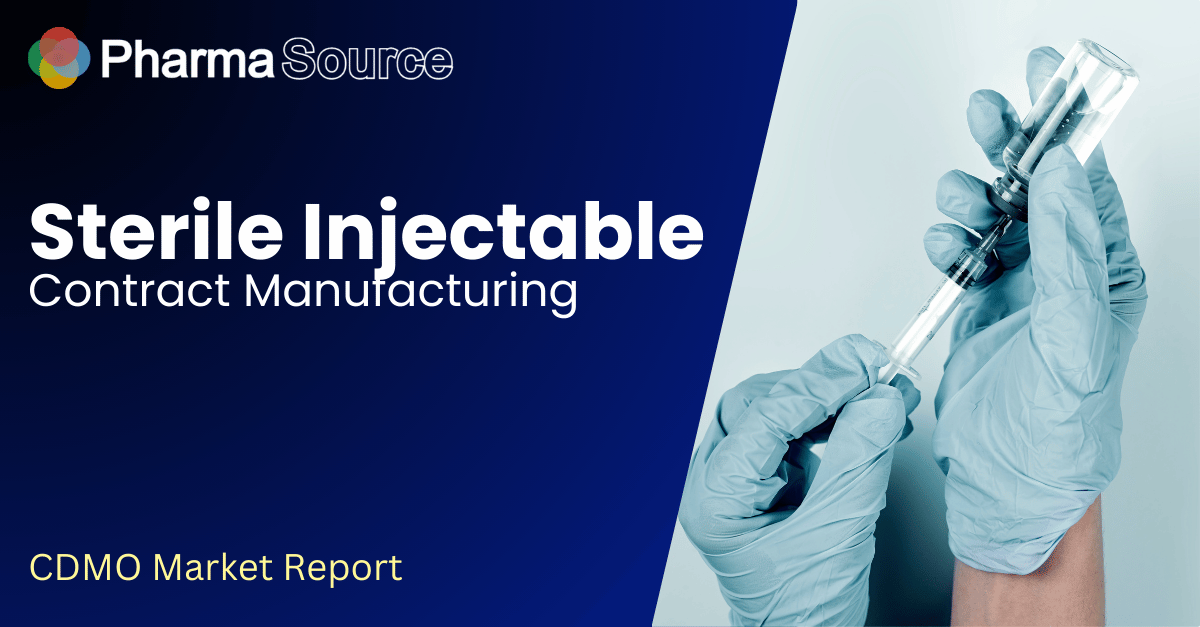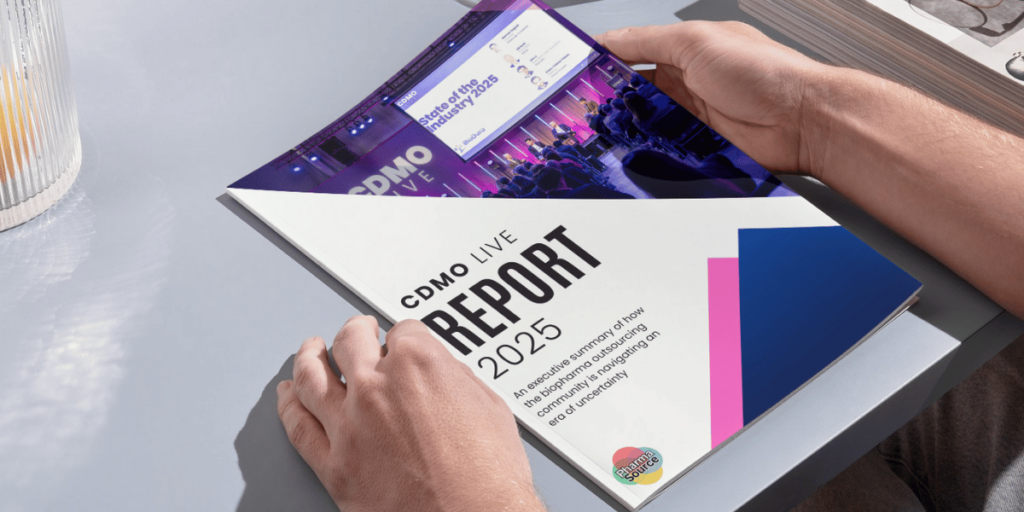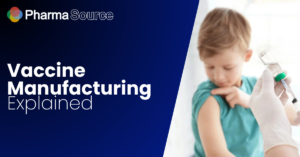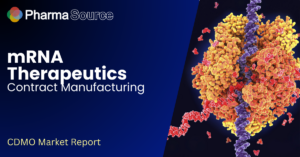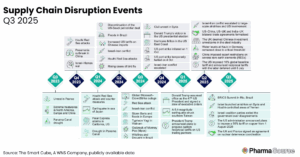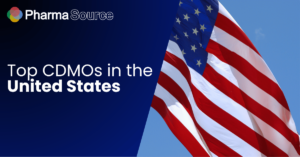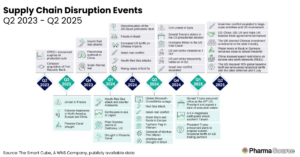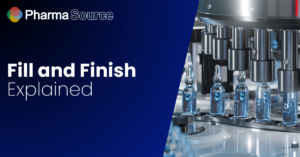Sterile injectable CDMOs are Contract Development and Manufacturing Organizations that provide services for the production of sterile injectable drugs.
The sterile injectables contract development and manufacturing organization (CDMO) sector is experiencing unprecedented transformation, driven by soaring demand for breakthrough therapies and evolving manufacturing technologies. This surge is particularly evident in the GLP-1 receptor agonist market, where manufacturers are racing to expand capacity for diabetes and obesity treatments.
With the U.S. FDA’s Center for Drug Evaluation and Research (CDER) approving 55 novel drugs in 2023, many requiring sterile injectable formulations, the sector’s growth trajectory is clear. Market analysts project expansion from USD 14.4 billion in 2024 to USD 33.7 billion by 2035, representing an 8% compound annual growth rate, according to Roots Analysis.
The sector’s explosive growth was highlighted by Novo Holdings’ landmark £13 billion acquisition of Catalent in February 2024, followed by Novo Nordisk’s £8.7 billion deal to acquire three of Catalent’s fill-finish sites. These strategic moves underscore the critical importance of securing sterile manufacturing capacity, particularly for high-demand products like Wegovy and Ozempic.
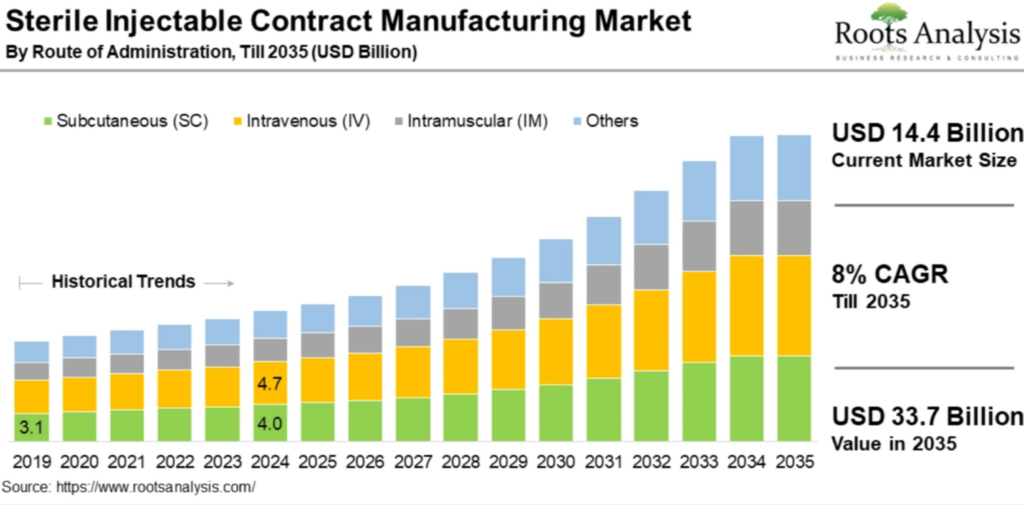
The market growth for sterile injectables has several key market drivers:
- Unprecedented demand for GLP-1 injectable products, with a “capacity crisis” as manufacturers struggle to meet market needs
- The growing biologics pipeline, particularly in monoclonal antibodies and cell and gene therapies, continues to drive demand for sterile manufacturing capacity.
- Over 40% of new drug approvals now require sterile injectable formulations.
- Major pharmaceutical companies investing heavily in expanding sterile manufacturing capacity. Recent high-profile acquisitions, exemplified by Novo Holdings’ £13 billion Catalent acquisition, highlight the strategic importance of securing sterile manufacturing capacity.
Sterile Injectables Explained
Sterile injectables are medications and therapeutic products that are administered directly into the bloodstream or tissues of the body, bypassing many of the body’s natural defences. Unlike oral medications or topical treatments, these products must maintain absolute sterility as they circumvent the protective barriers typically provided by the digestive system and skin.
These products are administered through various routes, each serving specific therapeutic purposes:
1-Intramuscular (IM) Injections: Delivered directly into muscle tissue, these injections are commonly used for vaccines, antibiotics, and hormonal treatments. The muscle tissue’s rich blood supply enables controlled absorption of the medication into the bloodstream.
2-Subcutaneous Injections: Administered into the fatty tissue beneath the skin, this route is particularly important for drugs requiring gradual absorption, such as insulin and GLP-1 agonists like Ozempic and Wegovy.
- Intravenous (IV) Injections: Delivered directly into the veins, this route provides immediate drug availability in the bloodstream, crucial for emergency medications and treatments requiring precise blood concentration control.
- Intrathecal Injections: These specialised injections deliver medication directly into the spinal canal, commonly used in pain management and certain neurological treatments.
- Intraperitoneal Injections: Administered into the peritoneal cavity surrounding abdominal organs, these are often used in specific cancer treatments and dialysis procedures.
Manufacturing Process
The production of sterile injectables involves two primary manufacturing approaches:
1. Terminal Sterilisation
This method involves:
- Manufacturing the product under controlled conditions
- Filling the product into its final container
- Sterilising the sealed container and its contents using heat (typically 121°C) or radiation
- This approach is preferred when products can withstand high temperatures or radiation exposure
2. Aseptic Fill-Finish
For products that cannot withstand terminal sterilisation, aseptic processing requires:
- Sterilisation of all components separately
- Assembly and filling in a highly controlled sterile environment
- Maintenance of sterility throughout the entire manufacturing process
- Continuous environmental monitoring and controls
Five critical components must be controlled throughout the manufacturing process
1. Sterile Raw Materials: All ingredients undergo rigorous testing for purity and potency
2. Sterile Compounding: The API generation process must maintain complete sterility
3. Sterile Containers and Closures: All packaging components must be contamination-free
4. Sterile Filling: Products must be filled in certified cleanroom environments
5. Sterile Packaging: Final packaging must maintain product integrity
Watch this video by Sharp Sterile for an overview of the process:
Sterile Injectable Market Trends
The sterile injectables CDMO market is currently shaped by several critical factors:
GLP-1 Impact and Capacity Demands
The unprecedented success of GLP-1 therapies has created significant pressure on manufacturing capacity, leading to:
- Major investments in new manufacturing facilities
- Strategic acquisitions to secure manufacturing capabilities
- Acceleration of capacity expansion projects
- Innovation in manufacturing processes to improve efficiency

“There’s been a lot of talk about sterile injectable capacity recently, but supporting this market means much more than having available filling lines.” says Paul Josephs, President and Chief Executive Officer Lifecore Biomedical. Admittedly, we’re excited about our new high-speed, flexible isolator filler which substantially increases our capacity and the modalities we can support. Yet, we know that our partners and their programs need more to thrive. We’re proud of the foundation of proven, end-to-end capabilities we’ve built over 40+ years which will enable us to successfully leverage our new capacity to fully support more clinical and commercial partners and their patients.
Supply Chain Considerations
Manufacturing capacity constraints and supply chain vulnerabilities have emerged as significant challenges, particularly highlighted by recent global disruptions. CDMOs are responding by:
- Investing in expanded manufacturing capabilities
- Implementing robust supply chain risk management strategies
- Developing redundancy in critical supply networks
- Establishing regional manufacturing hubs
Technological Evolution
The sector is witnessing rapid technological advancement in areas such as:
- Automated aseptic processing
- Single-use technologies
- Advanced filling systems
- Real-time monitoring capabilities
- Quality control innovations
Regulatory Environment
Increasing regulatory scrutiny and evolving compliance requirements continue to shape the market, with particular focus on:
- Implementation of EU Annex 1 requirements
- Enhanced sterility assurance measures
- Data integrity requirements
- Environmental monitoring standards
This complex and evolving landscape presents both challenges and opportunities for market participants, requiring strategic positioning and continuous adaptation to maintain competitive advantage in this high-growth sector. The influence of the GLP-1 market, in particular, is reshaping traditional capacity planning and investment strategies across the industry.
“The sterile injectables market is evolving and growing rapidly due to several key drivers. says- Rodrigo Rial, Business Manager, VIVUNT PHARMA.
“First, the increasing prevalence of chronic diseases, especially cancer, has amplified the demand for highly specialized injectable treatments. Oncology therapies, in particular, require precision, sterility, and scalability to meet market needs.”

“From a regulatory perspective, the updated EU GMP Annex 1 guidelines have placed a stronger focus on contamination control strategies, pushing CDMOs to adopt more stringent aseptic manufacturing practices. Investments in advanced technologies—such as isolators, automated fill-finish systems, and real-time environmental monitoring—are now essential to maintain compliance and ensure product integrity.
“Furthermore, the industry is witnessing a rise in demand for flexible batch production, particularly for personalized and targeted therapies. This shift requires CDMOs to enhance operational versatility while maintaining efficiency and cost control.”
In response to these trends, VIVUNT PHARMA has recently launched a state-of-the-art facility in Spain, fully compliant with Annex 1 EU GMP.
Recent Market Activity and Product Development
The sterile injectables pipeline is particularly active in several key areas:
1. GLP-1 Receptor Agonists:
- Expanded indications for existing products
- Development of new formulations and delivery systems
- Research into combination therapies
2. Monoclonal Antibodies:
- Increasing focus on subcutaneous formulations
- Development of novel delivery devices
- Biosimilar development programmes
3. Cell and Gene Therapies:
- Advanced therapy medicinal products (ATMPs)
- Novel viral vector manufacturing processes
- Personalised medicine applications
4. Biosimilars:
- Growing pipeline of complex protein products
- Development of novel formulation approaches
- Focus on manufacturing process optimization

“Commercial production of Lipid Nanoparticles (LNPs), crucial for LNP-based sterile injectables like vaccines and gene therapies, began in 2018. The first product, using siRNA wrapped in 4 lipids, was designed to treat hereditary transthyretin-mediated amyloidosis (hATTR) by delivering siRNA to the liver to reduce the expression of the faulty transthyretin (TTR) gene and prevent harmful amyloid deposits.” says Dr. John Cameron, Director, Global Injectables Platform, CordenPharma.
“LNP technology expanded from rare diseases to large-scale use, particularly with the mRNA-based COVID-19 vaccines, which saved over 2.5 million lives in 2021. Now, nearly 200 LNP-based therapeutics are in development, with applications spanning oncology, cardiovascular, neurology, autoimmune, CNS, genetic diseases, and immunology. Despite challenges with xRNA modalities, LNP technology is evolving, pushing the sterile injectable market to new heights and delivering more life-saving treatments.”
Key Sterile Injectable CDMOs
The sterile injectables contract manufacturing marketplace comprises numerous established and emerging players. Key sterile injectable CDMOs include:
- AbbVie
- Aenova Group
- Ajinomoto Bio-Pharma Services
- Alcami Corporation
- American Injectables
- Astral SteriTech
- Aurigene Pharmaceutical Services
- Baxter BioPharma Solutions
- BioCina
- BioTechnique
- Boehringer Ingelheim
- Bora
- Catalent
- CordenPharma
- Curida
- Evonik
- Fareva
- Fresenius Kabi
- IDT Biologika
- Incog
- Kindeva Drug Delivery
- Lifecore Biomedical
- Lonza
- Merck
- NextPharma
- PCI Pharma Services
- Pfizer CentreOne
- Quotient Sciences
- Recipharm
- Siegfried Holding
- Sharp
- Ten23 Health
- Thermo Fisher Scientific
- Upperton Pharma Solutions
- Vetter Pharma
- Vivunt Pharma
Download the European CDMO Landscape 2025 infographic here
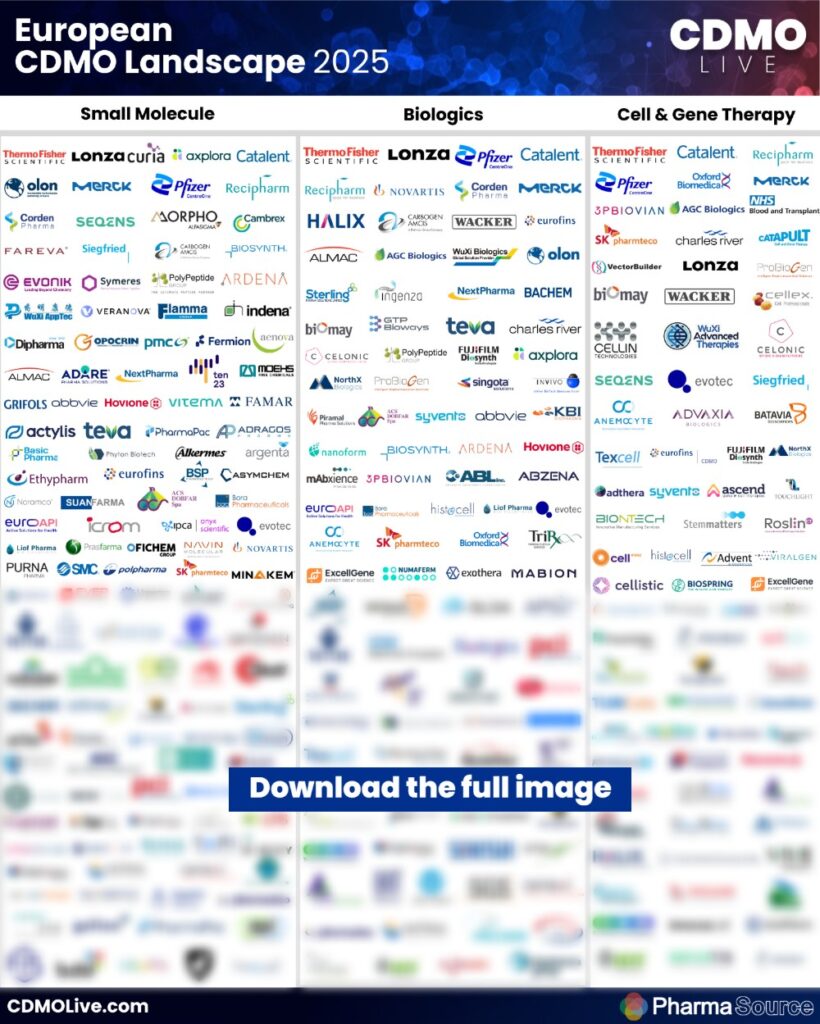
The recent stream of news stories about sterile injectable CDMO capacity include:
- Novo Holdings’ £13 billion acquisition of Catalent, driven by the need to expand GLP-1 manufacturing capacity (February 2024)
- Simtra BioPharma Solutions announces a $250+ million expansion of its sterile fill/finish manufacturing campus in Bloomington, Indiana. (February 2024)
- SMC Ltd. has announced the expansion of its sterile fill finish capabilities. The expansion is taking place in North Carolina
- Sharp Boosts Sterile Injectables Capacity with Macungie Expansion (March 2024)
- Delpharm’s acquisition of the Meppel facility from Astellas in the Netherlands (April 2024)
- June 2024: Aurigene’s establishment of a new 70,000 sq.ft. biologics facility in Genome Valley, Hyderabad for sterile fill-finish
- Piramal Pharma invests USD 85 million in CDMO expansion, maintenance, and capacity upgrades (October 2024)
- BioCina merge with NovaCina’s state-of-the-art sterile fill-finish plant in Perth, Australia (January 2025)
- Pace Life Sciences to expand Salem and Oakdale facilities for Sterile Fill-Finish (January 2025)
- Upperton completes build of new sterile manufacturing facility in Nottingham, UK (January 2025)
- American Injectables Receives FDA Approval for Sterile Injectables Manufacturing (January 2025)
- Recipharm unveils modular sterile filling system at Wasserburg Facility (January 2025)
Sterile Injectables Contract Manufacturing Challenges
The manufacturing of sterile injectables through CDMOs presents several complex challenges that require careful consideration and strategic planning:
1. Maintaining Stringent Sterility Standards
Manufacturing sterile injectables demands exceptionally high standards of sterility throughout the entire production process. CDMOs must maintain completely sterile environments, which requires sophisticated clean room facilities, advanced air handling systems, and rigorous contamination control protocols. The challenge intensifies when dealing with multiple products in the same facility, as cross-contamination risks must be meticulously managed through proper cleaning validation and segregation procedures.
2. Complex Technical Requirements
The technical complexity of sterile injectable manufacturing necessitates substantial investment in specialised equipment and facilities. CDMOs must maintain state-of-the-art aseptic processing capabilities, including isolator technology, automated filling lines, and sophisticated environmental monitoring systems. The challenge extends to ensuring consistent operation of this advanced equipment while maintaining the sterility of the manufacturing environment.
3. Regulatory Compliance Burden
The regulatory landscape for sterile injectables is particularly demanding, with increasing scrutiny from regulatory bodies worldwide. According to recent FDA reports, there has been a 32% increase in warning letters issued to pharmaceutical manufacturers for GMP violations. CDMOs must maintain robust quality management systems and stay current with evolving regulatory requirements, which can be resource-intensive and requires significant ongoing investment in compliance infrastructure.
4. Capacity Constraints
Meeting growing market demand while maintaining quality standards presents a significant challenge. CDMOs must carefully balance capacity utilisation with the need to maintain sterility and quality controls. This becomes particularly challenging when dealing with multiple client projects with different technical requirements and timelines.
5. Supply Chain Complexity
The management of sterile supply chains presents unique challenges. CDMOs must ensure the sterility and quality of raw materials, packaging components, and other critical supplies. Any disruption in the supply chain can have severe implications for production schedules and product quality.
6. Skilled Personnel Requirements
The specialist nature of sterile injectable manufacturing requires highly trained personnel with specific expertise in aseptic techniques and quality control. CDMOs face ongoing challenges in recruiting and retaining qualified staff, particularly in key roles such as quality control and aseptic manufacturing.
7. Cost Management
The high costs associated with maintaining sterile facilities, implementing advanced technologies, and ensuring regulatory compliance can be challenging to manage while remaining competitive in the market. CDMOs must balance these costs with the need to offer competitive pricing to clients.
The importance of long-term planning
Companies should look beyond the immediate 6 to 12 months and consider the growing demand for syringes, especially with the rise of monoclonal antibodies and the GLP-1 market.
In a recent interview with PharmaSource Cory Lewis, CEO, President, and Founder of INCOG Biopharma Services, explained the importance of long-term planning in the high-growth sterile injectable market.
“GLP-1 is projected to be a $100 billion market by 2030, indicating a substantial increase in syringe consumption. Strategic, long-term thinking will be crucial for success in this evolving landscape.”
“We’re not just planning for the immediate needs but looking one, two, even three years ahead. With our second and third production lines in the pipeline, we’re preparing for the long-term demands of the market. This forward-thinking approach is especially crucial for syringes and cartridges, where longer-term planning is becoming increasingly important.”

“As the number of small batch biologics entering the market increases, the high demand for clinical supply is creating up to 18-month delays in access to manufacturing.” says Nikki Whitfield, CEO – Upperton.
“In a highly regulated space where speed and quality are crucial, the importance of selecting a CDMO with flexibility within its facility design and operations is critical to supporting biotechs and alleviating some of the potential delays in manufacturing timelines. Ultimately, speeding up the clinical supply chain and getting medicines to patients quicker”
Listen to a full interview with Nikki Whitfield, How Upperton Pharma Solutions is Redefining CDMO Partnerships
How to find the right Sterile Injectable CDMO partner
Selecting a CDMO partner for sterile injectable manufacturing requires particularly careful evaluation due to the complex requirements of aseptic processing and the direct patient safety implications. Unlike oral solid dose manufacturing, sterile injectable production demands exceptional attention to contamination control, sterility assurance, and particle management.
When evaluating potential partners, consider these critical factors:
1. Quality Management Systems
- Evaluate the CDMO’s track record in maintaining sterility assurance and contamination control
- Review their environmental monitoring program, trending data, and excursion management
- Assess their media fill validation program and historical success rates
- Examine their particle monitoring capabilities and control strategies
- Review their sterilization validation approaches (terminal sterilization vs aseptic processing)
- Verify their data integrity protocols, particularly for critical sterility data
- Evaluate their deviation management and CAPA processes, especially for sterility-related issues
2. Technical Capabilities and Expertise
- Assess specific filling line capabilities (vials, syringes, cartridges)
- Evaluate their experience with different container closure systems
- Review their lyophilization capabilities and capacity if required
- Examine their filter validation expertise and approach
- Assess their component preparation and sterilization processes
- Review their visual inspection capabilities (manual and automated)
- Verify their analytical testing capabilities for sterile products
As ten23 health’s CEO Hanns-Christian Mahler notes: “Many think their job is just to focus only on the fill-finish – to fill and execute a customer’s list of requirements. Our development knowledge plays a significant role. Being able to have a dialogue with customers about formulations and process details and interaction such as filter and tubing selection, or fill volume targeting demonstrates our expertise beyond mere execution.” Read the full interview
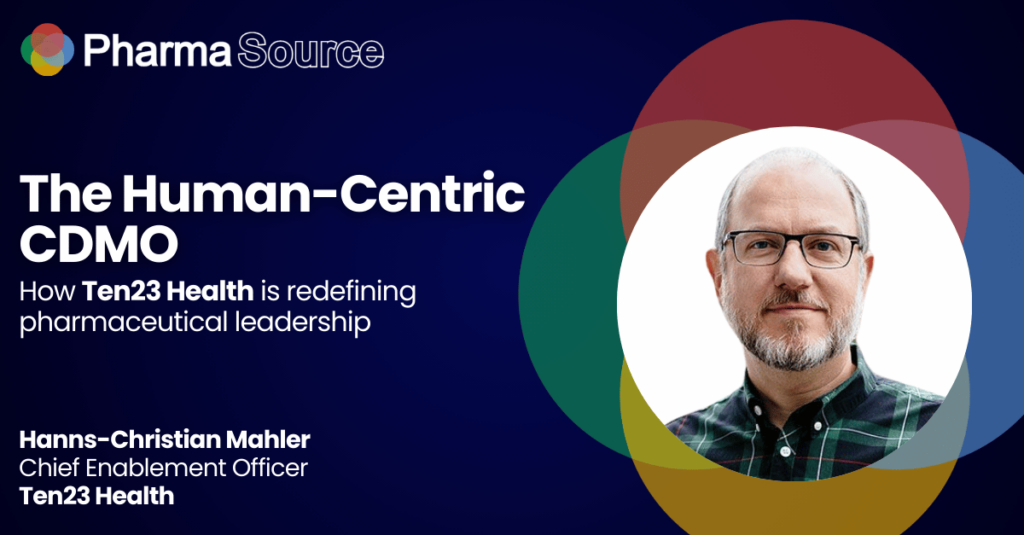
- Facility Design and Controls
- Evaluate clean room classification and monitoring systems
- Assess air handling systems and pressure cascade designs
- Review personnel and material flow patterns
- Examine gowning procedures and aseptic technique training programs
- Verify clean room qualification and ongoing monitoring programs
- Review their approach to contamination control and sterility assurance
- Regulatory Compliance and Documentation
- Review their experience with sterile product-specific regulations
- Assess their understanding and implementation of Annex 1 requirements
- Evaluate their track record with aseptic processing inspections
- Review their experience with sterility assurance submissions
- Verify their inspection readiness and audit performance history
- Examine their change control procedures for sterile manufacturing
- Project Management and Technology Transfer
- Assess their experience in sterile product tech transfers
- Evaluate their approach to process validation and qualification
- Review their track record in meeting sterile product timelines
- Verify their escalation procedures for sterility-related issues
- Examine their knowledge transfer protocols for aseptic processing
- Risk Management Approach
- Review their contamination control strategy
- Evaluate their environmental monitoring excursion handling
- Assess their sterility failure investigation expertise
- Review their container closure integrity testing program
- Examine their approach to sterility assurance risk assessment
- Verify their business continuity plans for sterile operations
- Financial Stability and Investment Plans
- Assess their commitment to sterile manufacturing technology
- Review planned investments in sterile capabilities
- Evaluate their pricing structure for sterile production
- Verify their insurance coverage for sterile product manufacturing
- Examine their long-term plans for sterile facility expansion
- Cultural Fit and Partnership Approach
- Evaluate their understanding of sterile product requirements
- Assess their transparency in sterility-related issues
- Review their approach to sterility assurance innovation
- Verify their commitment to maintaining sterile standards
- Examine their track record in sterile product partnerships
- Security and Intellectual Property Protection
- Review their procedures for protecting proprietary formulations
- Assess their controls over critical process parameters
- Evaluate their systems for protecting batch records
- Verify their protocols for handling sterility data
- Examine their track record in maintaining client confidentiality
“The commercialization of LNP-based sterile injectables, producing high-quality Lipid NanoParticles (LNPs) requires a CDMO that offers flexibility and an integrated supply chain with minimal risk.” says Dr. John Cameron, Director, Global Injectables Platform, CordenPharma.
Key considerations include:

- Integrated Supply: Biotech companies prefer a CDMO offering a one-stop-shop for lipids, nucleic acid payloads, LNP development, cGMP manufacturing, and sterile injectable capabilities
- Experience: While LNP technology is new, manufacturing and sterile Fill & Finish are well-established. A CDMO with expertise in robust analytics and process development is essential
- Lipid Quality: Pure ionizable lipids are vital for maintaining RNA potency. Poor lipid quality can deactivate the RNA, reducing LNP efficacy
- Risk Mitigation: Nucleic acid payloads are expensive. Select a CDMO with experience in handling high-value, complex APIs
- Quality: Patient safety is non-negotiable. Ensure the CDMO complies with regulatory standards and has a strong track record. A customer audit is highly recommended
The selection of a CDMO partner for sterile injectables requires careful evaluation of these criteria, with particular emphasis on quality systems, technical capabilities, and regulatory compliance. A thorough due diligence process, including site visits and detailed technical assessments, is essential to ensure the chosen CDMO can meet your specific requirements and maintain the highest standards of quality and compliance in sterile injectable manufacturing.
Try downloading the CDMO Request For Quote checklist
According to Rodrigo Rial, Business Manager, Vivunt Pharma, to maximize the benefits of a CDMO partnership, sponsors should consider the following:

- Early Engagement: Involve CDMOs early in the development process to utilize their expertise in manufacturability, regulatory compliance, and scale-up strategies. Close collaboration from the start helps prevent costly delays during later stages.
- Clear Communication and Alignment: Set clear project goals, quality standards, and timelines from the beginning to ensure alignment and reduce risks.
- Leverage Technological Expertise: Select CDMOs investing in advanced technologies, such as closed-system isolators, automated lyophilizers, and digital twins for process optimization. These innovations enhance sterility assurance and production efficiency.
To stay up-to-date with the latest CDMO innovations, join us at CDMO Live 2025 (7-8th May, Rotterdam). Book your ticket

